Asteraceae: Bidens cernua L.
(bur marigold, nodding beggartick)
There are 7 species of the genus Bidens, the beggarticks, in Nova Scotia. All (in N.S.) are annual herbs growing in wet places. Two- or 4-awned fruits (4 in B. cernua) stick to animals or clothing, hence the inclusion of "bur" or "tick" in common names. "Bidens" comes from the Latin for two teeth, referring to the awns. The flowers of Bidens spp. may be discoid or radiate, with yellow rays in the radiate types. Leaves are always opposite.
B. cernua has hemispherical (as opposed to bell-shaped) erect to nodding, usually radiate flowers with 6-8 rays, sessile clasping leaves (versus petiolate leaves) and loosely spreading (as opposed to ascending) outer bracts. The specific epithet cernua is from the Latin for stooping, referring to the nodding habit of flowers. The species grows to 2.7 meters (5 feet) height. It occurs throughout N.S. at edges of lakes, ponds, along stream, swamps, wet meadows. B. cernua is disributed throughout most of North America, also occurs in Europe and Asia.
Sources | Selected Web Resources | Line Drawing
Click on images for larger versions.
| Aug. 31, 2008 Haliax County: Frog Pond (Halifax). Photographer: JackPine. | |
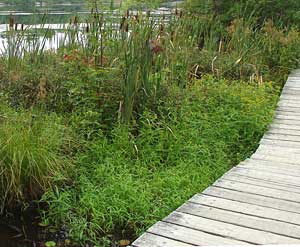
|
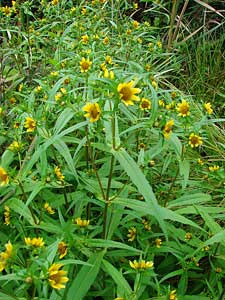
|
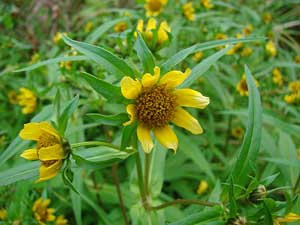
Nodding flowers. |
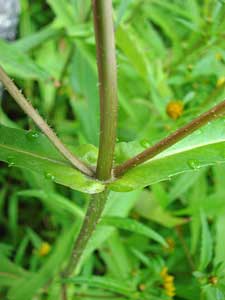
Clasping leaves. |
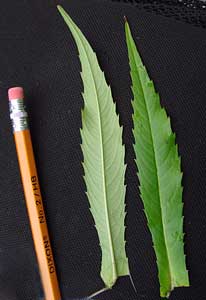 Leaf: lower (left) and upper surfaces. |
|
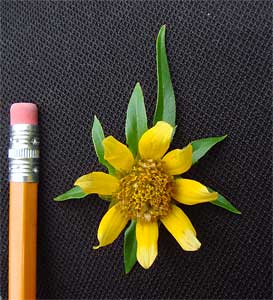 Flower: from above. |
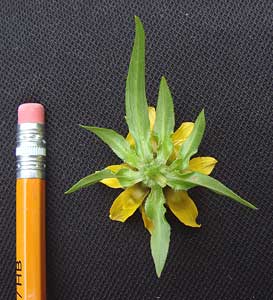 Flower: from below, showing bracts. |
| Sep 15, 2008 Haliax County: Frog Pond (Halifax). Photographer: JackPine. | |
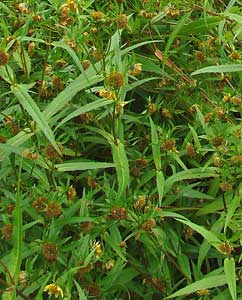
Same site as Aug. 31, most flowers are post-bloom. |

Maturing fruits. Bar is 1 cm. |
| Oct. 22, 2008 Haliax County: Frog Pond (Halifax). Photographer: JackPine. | |
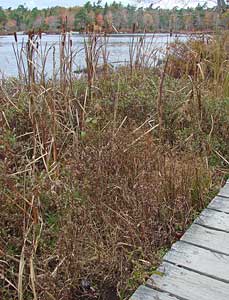
Same site as Aug. 31. |

|
 Fruits on clothing. |
Selected Web Resources
- Taxonomic Status (ITIS) Copy the species name above and paste it into a form on this ITIS Canada page to confirm the nomenclature and list synonyms.
- NatureServe Explorer Copy the species name above and paste it into a form on this page to view a map of its distribution within North America and its conservation status by province and state.
- Flora of North America: Bidens